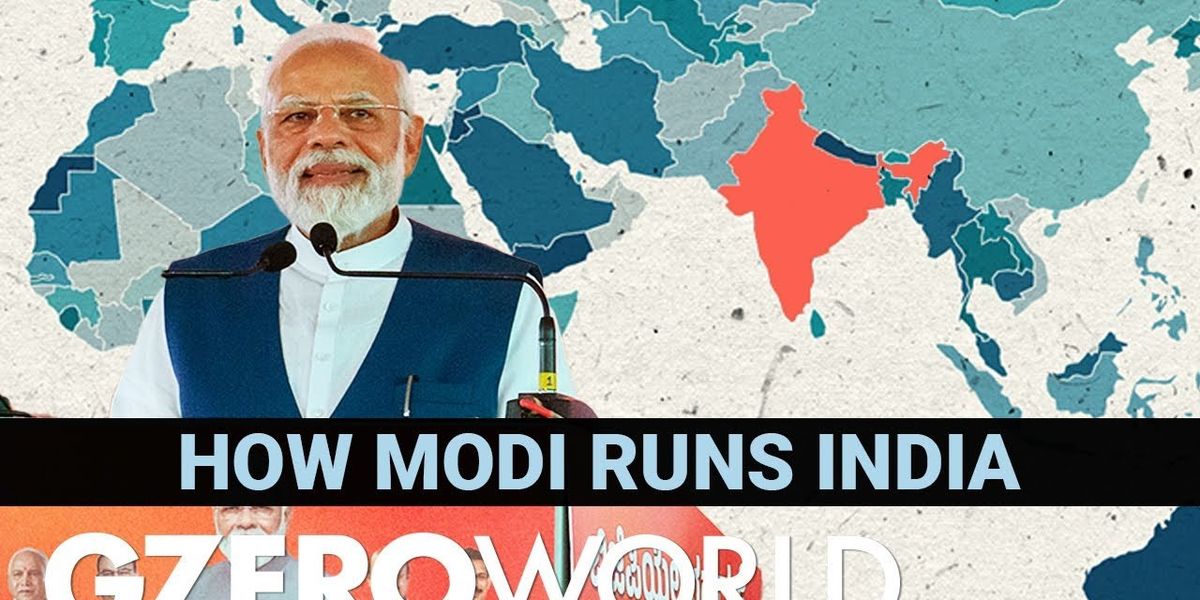Trending Now
We have updated our Privacy Policy and Terms of Use for Eurasia Group and its affiliates, including GZERO Media, to clarify the types of data we collect, how we collect it, how we use data and with whom we share data. By using our website you consent to our Terms and Conditions and Privacy Policy, including the transfer of your personal data to the United States from your country of residence, and our use of cookies described in our Cookie Policy.
{{ subpage.title }}
What does democracy look like in Modi's India?
India's population recently surpassed China's and in the most populous country on earth, nothing is simple. But for the world's largest democracy, democracy isn't so simple, either. India has had its fair share of problems, from the persecution of minority groups, to a clamping down on press freedom, and India's Prime Minister Narendra Modi has faced stiff criticism from the West. But during his recent trip to the White House, President Biden still rolled out the red carpet and welcomed him with open arms. The question remains: What does a Modi led India look like?
Our guest this week is award-winning broadcast journalist and Washington Post columnist Barkha Dutt, who has a message for both DC and Delhi: "For the critics in America, let India battle this out. It'll probably be more productive. Don't be judgy. Talk to us as an equal. For the Modi government, you can't hide from this question. You need to start engaging with it. It's a real question, and you have to engage with the criticism that is brought to your door on this question."
Tune in to “GZERO World with Ian Bremmer” on US public television to watch the full interview. Check local listings.
Yogi Adityanath, Chief Minister of the northern state of Uttar Pradesh, addresses his party supporters during an election campaign rally.
What’s at stake in India’s state elections?
Over 150 million Indians have registered to vote in five state elections that just kicked off and will run through March 7. (Fun fact: 39,598 voters aged 100 and over are registered to vote, according toThe Economist.) The biggest electoral battle will take place in Uttar Pradesh, India’s most populous state, which is often seen as a bellwether for national politics. The other states holding elections include Punjab, Goa, Manipur, and Uttarakhand; all but Punjab currently have BJP-led governments.
Prime Minister Narendra Modi’s ruling BJP party has dominated politics in Uttar Pradesh since 2017 – and the PM himself represents the state in Delhi’s Parliament. But the party’s grip on the state could now be weakened. Why? First, at least 20% of Uttar Pradesh residents are Muslims who likely oppose the incumbent chief minister, Yogi Adityanath, a Hindu nationalist who has rallied against marriages between Hindus and Muslims, and has an impressive rap sheet, which includes charges of attempted murder (the case was dismissed in 2019). Second, Modi’s recent drive to reform the country’s farming sector – which gave way to year-long protests – has also hurt the BJP in Uttar Pradesh, an agricultural stronghold with a large rural population. The caste system is also a big factor: Akhilesh Yadav and Kumari Mayawati, former chief ministers, will likely be vying for their caste groups to back them.
Eurasia Group’s Diwakar Jhurani recently said that bread-and-butter issues like access to basic public goods and services, job creation, and infrastructure will also dominate the campaign: “Historical data suggest that Indian voters tend to punish incumbents over dissatisfaction with these issues,” Jhurani says. Opposition parties in all five states will be looking to capitalize on this discontent.BJP defies pundits in Uttar Pradesh and West Bengal
The ruling Bharatiya Janata Party (BJP) of Prime Minister Narendra Modi surprised many pundits yesterday with its performance in the two key states of Uttar Pradesh and West Bengal.
